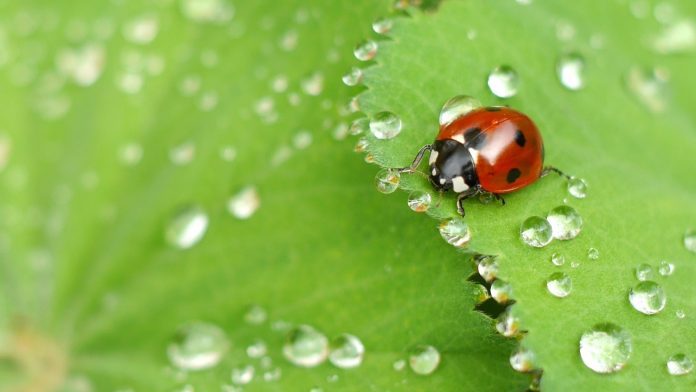Having a garden is a wonderful source of fresh vegetables in the summer. You can also freely enjoy the freshly cut flowers. Unfortunately, your garden not only provides you with food and fun, it also provides food for a wide range of insects. To control small pests, you can buy insecticides, but many have side effects that people want to avoid.
You can create “all natural” pesticides, but these will always kill the good and the bad. Rather than spraying your plants with poison, the best way to control many of your unwanted pests is to use ladybugs. They are friendly insects that even children love.
Why are ladybugs so beneficial in any garden?
Garden insects say that ladybugs are great for eating all kinds of garden pests. The main foods for these beetles are aphids, mealybugs, mites and other soft-bodied insects. According to garden insects, a ladybug could eat 5,000 aphids during its lifetime. If you have enough in your garden, you can rid your garden of aphids and other insects without using chemical pesticides. As the diet of adult ladybugs is also made up of pollen, this small beetle will help you pollinate your plants.
How to attract ladybugs.
If you have a lot of aphids, scale insects, scales, mites and leafhoppers but you don’t have ladybugs, you should bring them to your garden. Gardening Know How says that with all the insects you get half of what ladybugs want. You should now get pollen that attracts them to your garden. Ladybugs are very fond of pollen and leaf shapes of angelica, marigold, statice, analyssum and yarrow. Apartment Therapy recommends putting water on shallow plates so that ladybugs have enough to drink.
How to release the ladybugs.
If you feel that you cannot take the time to attract ladybugs to your area, you can buy them and release them in your garden. According to Buglogical Control Systems, if you choose to do so, the best way to ensure that they remain is to refrigerate them first so that they move slowly. Their refrigeration mimics their own hibernation process. Once you’ve released them, be sure to do so at dusk and in a well-watered area. Buglogical also indicates that you should distribute the ladybugs so that they are not all in the same place while feeding. You want to make sure there is enough food for your little friends.
Treehugger warns, however. A large quantity of ladybugs are collected from the wild and can carry parasites harmful to native ladybug populations. Treehugger says you can get farmed ladybugs from BioBest and Insectlore. This will prevent you from having contaminated ladybugs. The best option is simply to attract them if you can afford it.
Plants that attract ladybugs.
Gardening Know How says that ladybugs seem to be attracted to plants with large petals and white and yellow flowers. Since the diet of the adult ladybug is made up of both pollen and aphids, it is just as important to have plants that they enjoy as the insects they will eat. In addition to those mentioned above, ladybugs seem to like calendula, cumin, chives, cilantro, cosmos, dill, fennel and chamomile. Balcony Garden Web lists 26 plants that attract ladybugs, but some of the main winners are garlic, bachelor button, parsley, Queen Anne’s lace, butterfly grass, dandelion, and mint.
Plant a few inviting plants for ladybugs and maybe even a few to attract the insects they eat. This could keep the bugs away from what you really want to save and make sure you have lots of these nice little beetles around you to do your job.










